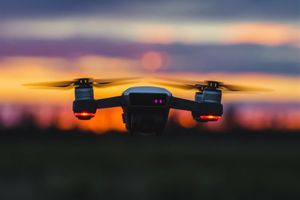AI has changed how we finish portraits, but speed alone doesn't guarantee quality. The challenge of AI portrait editing is balancing automation with judgment: using smart detection to save time without sacrificing natural colors, textures, and expressions.
In this guide, we explain how to edit portrait photos with AI, offering readers a practical path from setup to delivery. You will learn what tools to rely on and what retouching techniques to apply for polished, consistent, and unmistakably human portraits.
Step 1: Set a Non-Destructive Setup
Start by establishing a clean and reversible workflow. Import the file you would like to edit into your post-processing program. The best portrait editing software should support high-resolution formats like RAW for better flexibility.
Post-processing begins with basic adjustments — brightness, contrast, white balance, and exposure. Once done, duplicate a clean base layer if your software does not support non-destructive editing. Create separate layers for skin, features, and global polish, so you can toggle between them and compare quickly. Mask eyes, lips, brows, and hairlines before any skin work; protecting edges prevents halos and keeps lashes crisp. Work at 50–75% zoom for decisions and jump to thumbnail size to verify likeness.
Step 2: Take a Smart First Pass
Once the foundation is set, you can edit photos with AI. Use the face AI editor as a targeted first pass and keep strength conservative. Pores, peach fuzz, and micro-contrast should remain visible. Limit smoothing to cheeks and mid-forehead. The nose texture, eyelids, and lips should stay untouched to carry the subject's authenticity.
Add a low-opacity mask to finesse transitions around the jaw and nasolabial fold. The preview mode will help you check whether cheek gradients and nostril edges look natural. If the skin looks waxy, reducing the effect's opacity will be more helpful than overlaying more corrections. It will help you preserve realism and save time during the more detailed edits we will discuss below.
Step 3: Enhance the Eyes
Artificial intelligence excels at finding facial features, but you decide how far to push them. The eyes are the focal point of every portrait, so they deserve special attention. Keep sclera brightening subtle (no pure white), lift iris contrast just enough to add definition, and protect natural catchlights so the gaze stays believable. Ensure your model's eyes are not red. What is a red eye in photography? It is pupil discoloration, which commonly appears after shooting with a flash. Most post-processing programs can handle it, but you should work with targeted channels. Avoid desaturating the entire eye because it can make your pictures look lifeless and flat.
Clean small veins with a gentle heal at low opacity. Mask any global smoothing away from lashes and crease lines to preserve the eyelid texture. Use the preview mode constantly for the likeness check. If the model's eyes look too wide or you see a creepy doll-like stare, you should reverse your edits and start anew more cautiously.
Step 4: Add Micro-Details
Portrait photo editing tips for lips and brows follow the same restraint. Reduce only the harshest lip speculars, keep fine lip texture intact, and prioritize local color adjustments over global repainting.
For brows, fill obvious gaps with a tiny, textured brush on a separate layer, matching the flow and direction of hair; skip heavy sharpening that turns strands into spikes. The lash detail and eyebrow edges should remain crisp while the overall face still reads natural at a glance.
Step 4: Work on Tone Harmony and Texture-Safe Smoothing
Start by evening out the color in the orange/red ranges in the drifting areas. These areas commonly include chin shadows, around the nose, or forehead highlights. Prioritize lower opacities; otherwise, the skin might turn greyish or have an artificial neon glow.
Next, smooth the botchy zones — mid-cheek and mid-forehead. Mask off pores around the nose, eyelids, and lip edges so they remain unaffected. These textures are paramount because they preserve the subject's unique character and convey authenticity.
Add a microdose of midtone contrast or a light dodge/burn pass to restore the depth after smoothing. If denoise or smoothing thinned texture, a whisper of fine grain can help you restore pores and peach fuzz to prevent a plastic-like look. Mind the difference between restoring depth and oversharpening — the overprocessed, grainy pictures look unappealing, irrelevant, and scream low quality, no matter how hard you worked on them.
Step 5: Fine-Tune and Save
Do a quick preview: Make sure lashes are sharp, nostril edges are intact, cheek gradients are smooth, and temples do not have banding. Once you are satisfied, save the edited version in your preferred format for web or printing and share it online if you want to.
Conclusion
AI can speed up portrait work, but quality comes from restraint and clear decisions. A cautious and consistent photo editing approach ensures believable results. Small manual moves alongside automatic enhancements can help you bring back depth and protect your subject's identity. With this workflow, you deliver portraits that feel clean and consistent, hold up under close inspection, and—most importantly—still look like the person you photographed.
Media Contact
Company Name: SKYLUM
Email: Send Email
Country: United States
Website: https://skylum.com/







